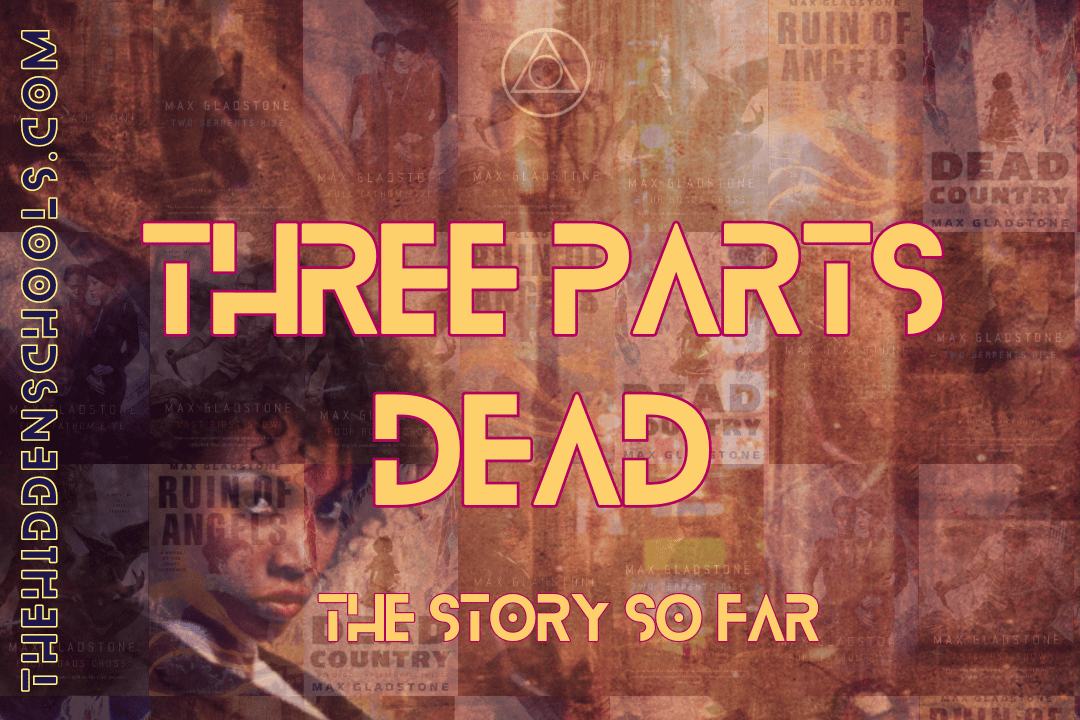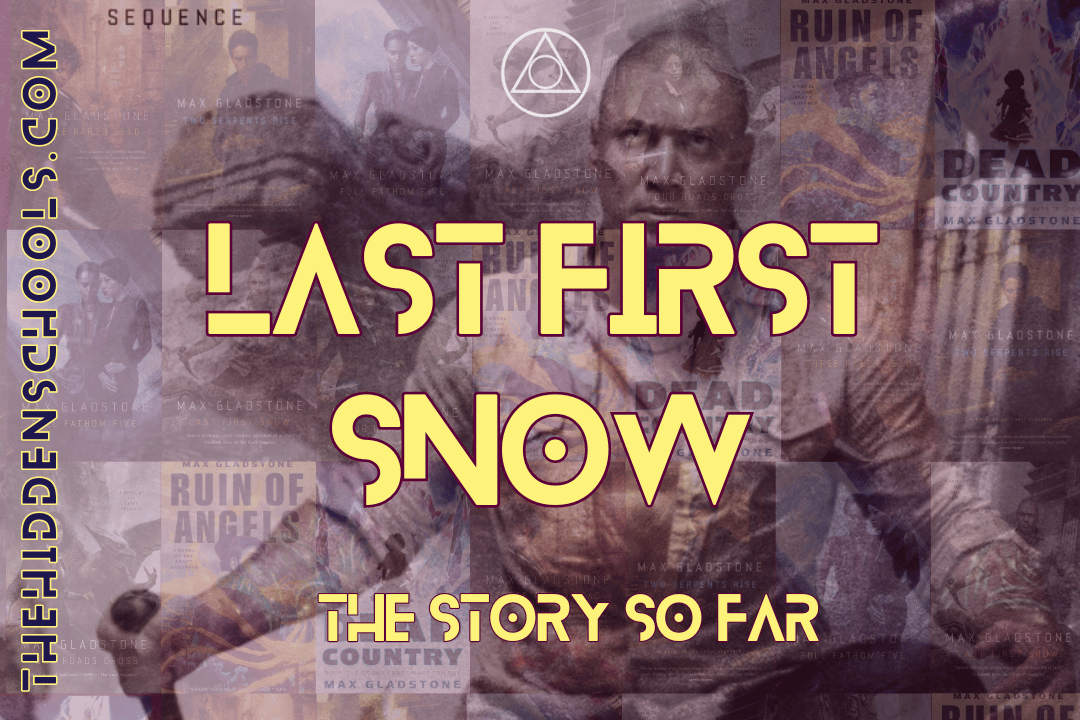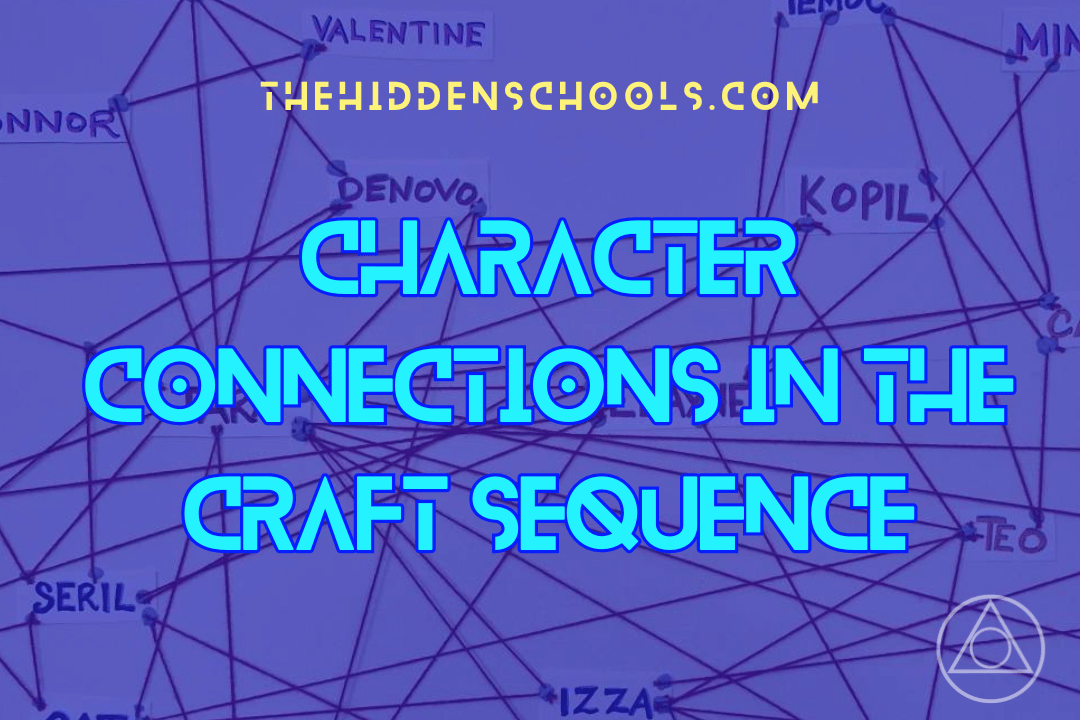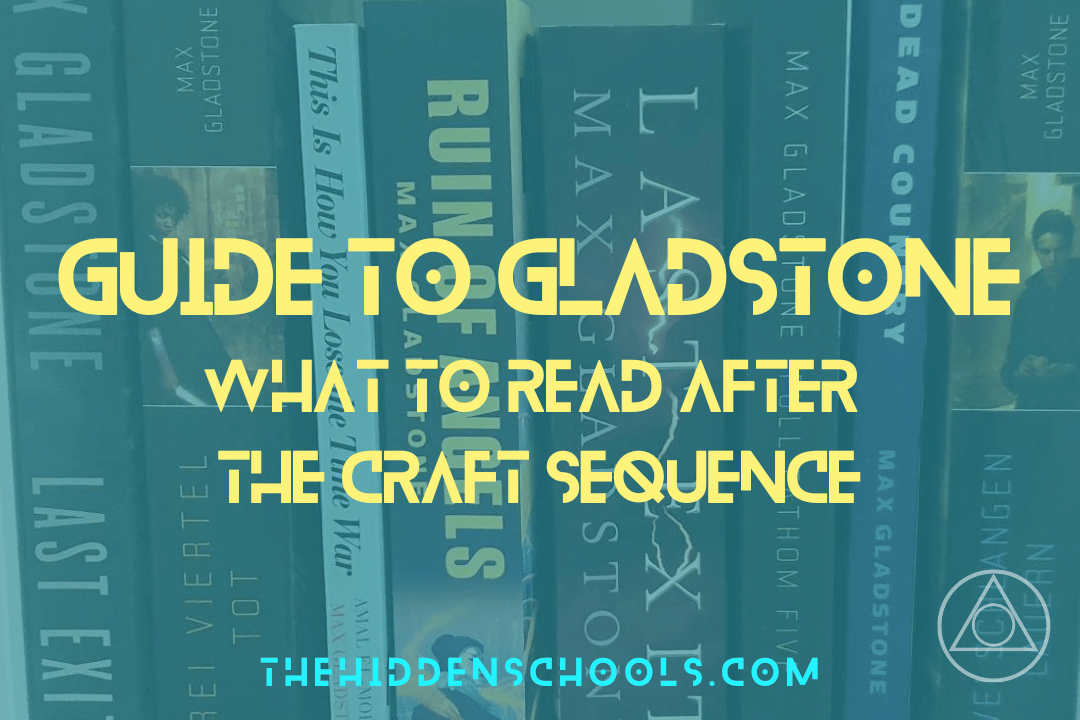What has Tara learnt about the skazzerai since Alikand? | Space Spiders
At the beginning of this year, we speculated that the skazzerai (AKA space spiders) were going to play a big role in the new Craft Wars trilogy. If you’ve read Dead Country, you’ll know we were right.
If you haven’t read Dead Country oh my god get off this article, you will be spoiled to hell and back. Go read Dead Country NOW, by Seril and Kos it’s so good and also I wasn’t kidding when I said this article has so many spoilers. So many.
This article is the first of THREE, you lucky readers, deep diving into everything we now know about the skazzerai. It was meant to be one, but when we hit 5,000 words and had barely done any analysis it was clear that the sub-sections needed to become full blown articles in their own right.
So, this article covers what Tara has learnt about the skazzerai since the end of Ruin of Angels, and takes us to about halfway through Dead Country. BUT before we jump into the Dead Country of it all, we must issue an addendum to the first article.
In a recent reread of the series, we discovered four space spider references we missed the first time round. So, for completion’s sake, here they are.
In the choose your own adventure game, Choice of the Deathless, your character ends up the demon realm and describes what they see in the sky:
“The stars are out, their constellations as alien as everything else in this strange plane. Dancers and spiders and webs and geometric shapes—only when you blink they’re not stars at all but massive eyes unknowably far away, each one staring at you.”
This may be a different plane with foreign stars, but the skazzerai are still there, waiting, watching.
We also missed two background references in Ruin of Angels, reinforcing that knowledge of the skazzerai in deep history has become embedded in myths around the world. Last time we focused primarily on what the Quechal knew about the space spiders, but the Iskari and Telomeri clearly have similar memories turned myth.
“Some of the stained glass was new. Kai had only seen the stuff antique, in Iskari or Telomeri churches, dragons and star kraken and mountain-sized spiders formed pane by monochrome pane.”
“It was the summer solstice, Monster’s Day in Iskar, and children and drunk students filled the streets wearing fanged masks and rot makeup and Craftwork sets of false extra arms: the demonic hosts of deep space and their grotesque auxiliaries, rising to beat back the legions of light.”
Spiders the size of mountains immortalised in religious tales, demonic many-armed monsters from deep space now part of a Hallowe’en style holiday… this sounds skazzerai-y to me!
And, finally, I missed a rather more in-your-face reference in Four Roads Cross, which to be completely frank I only noticed because Tara directly references it in Dead Country and I went back to check the details last night.
Oops? I was clearly too distracted by how cool Tara is in this scene to pay enough attention to what her defeated enemy had to say.
“The world is breaking. The Wars made cracks, and we have broken it further. Our work turns soil to ash and water to poison. Even as we push ourselves to the brink of doom, beings the size you cannot comprehend watch us with many eyes across vast gulfs of space. The universe is larger than this petty island of rock. As if we needed an external threat: this planet will not last forever, and when it dies we must be elsewhere.”
This is from Madeline Ramp, an associate of now-dead Alexander Denovo. We learn in Dead Country that Denovo had some idea of what was coming – and it seems he shared that with his colleagues.
Now that we’re all caught up, on to everything we learned abotu the skazzerai in Dead Country.
(Note that some longer quotes may have been cut down for ease in this article, so if you go back to the citation and see paragraphs I’ve skipped that’s why.)
What has Tara learned about the space spiders since Alikand?
Last time we saw Tara – and, actually, anyone in the Craft Sequence universe – they were fighting the Iskari Rectification Authority and the gods from the Wastes to defend the ancient hidden city of Alikand. As part of this battle, Kai went to space (yeah Gladstone doesn’t stay within genre boundaries, we’re getting into sci-fi territory in a marvellous way) and listened to what was out there.
“What did you hear?”
“Stars. They . . . sing.”
“And.”
“I heard—legs. Skittering closer. Whispers older than time. They speak in the pulses of distant suns. They’re so, so hungry. And they smell us.””
That was two years ago. Since then, Tara has worked with Kai, the Twin Serpents Group and all her other allies to figure out what the hell is out there. To figure out what is coming for them.
Gladstone builds the tension from page one:
“And, of course, the black folder tied with black string that she brought everywhere these days.”
We don’t learn much about what the folder contains for a while, but we get tantalising hints throughout the first half of the book. Each gives us a little more information, or build a little more tension.
It’s been six years since the publication of Ruin of Angels, and I imagine most people aren’t as obsessive as I am to comb through the existing books for hints and clues (again, see “what’s the deal with the space spiders”) so I imagine more casual fans had less of an idea of what might be in this folder. This build up means that in addition to the gradually building dread and anticipation, readers get drip-fed clues or reminders about what came before. And, of course, Dead Country is advertised as a potential entry point to the series for new readers and thus must cater to brand new fans, casual readers of the first books, and the obsessive weirdos like me.
Have a whole bunch of quotes building the tension:
“I should have come before, I was just too godsdamn busy. Everything’s moving so fast, ever since Alikand. Ever since we learned…” She cut herself off. She didn’t want to talk about the black folder.”
“The scars were real. So was the black folder on the dresser upstairs—and the records it contained, which led her to fight that particular battle. She felt dizzy, thinking that her mother and the black folder were part of the same world.”
“Where did you get that scar on your neck? The silver one?”
“I was fighting a god. Well. Gods.”
“Why?”
“A lot of reasons. My friends were in trouble. And I wanted to learn a secret.”
“What secret?”
She thought about the black folder, the crystal records inside, the click of clawed footsteps drawing nearer across the stars. “How the world would end.”
“Did you?”
She heard those footsteps in her nightmares. “I hope not.”
“Tara thought about the black folder, about her father, about the Seer. “He didn’t want to worry you,” Ma had said. As if she were still a child he could save. Connor couldn’t have fought the raiders, but Tara? If she hadn’t been half a continent away, fretting about spiders beyond the stars, about the death of gods and the end of the world, about all those big and terrible things that were her responsibility, and yet did not seem to matter in the way that spade of dirt she’d thrown on her father’s coffin mattered.”
“The black folder stood monolithic and undisturbed on the dresser where she’d left it, three feet and several subjective miles away. Dizziness at the corners of the room, but with a groan and a lunge, she snagged the folder, and sank back onto her quilts, breathing heavily.
Sure, she was worn out. But she could read. Maybe a plan would suggest itself. Some new angle of approach. She undid the cord that held the folders closed and drew out a sheaf of papers.
…
She tied the folder shut. Its glyphs crackled as the security wards reset.”
What’s in the folder? What did Kai hear in Ruin? What are the footsteps beyond the stars?
Almost exactly halfway through the book, we finally find out.
“Unable to get back to sleep, she untied the black folder and read. Its contents hovered around her like bad planets, the etchings and lithographs, the glossy pictures, and of course the memory crystal she had brought home from Alikand two years before.
The pictures, the legends, the descriptions of vanished artifacts, those might mean anything, taken alone. Every culture dreamed of the end of the world. Human beings told stories, about how there had been worlds before this one, and those worlds were gone now, and how one day this world, too, would end. They told those stories again and again, carved them into stone and painted them on cave walls and passed them down generations, because people needed help to make sense of the strange and brutal planet they found themselves upon. No reason to take those stories literally.
But then there was the crystal, glowing with ghostlight in midair. When she touched it, she heard the sound, which had not been a sound when it was recorded. It had been captured out in the void beyond the sky, where there was no air. But things out there in the dark made waves of a sort, propagating through nightmares and light. When she touched the crystal, Craftwork translated those to sound, and she heard footsteps, massive, slow, and drawing near.
They were far away, she told herself. She didn’t even know who they were. She had seen shadows. Cave paintings. Half-melted reliefs in Quechal temples.
There were so many things happening at once.”
The memory crystal contains what Kai heard up in space, and the rest is the total of Tara’s research into what made that sound. Throughout history, people have shared stories of what they are, the spiders beyond the sky. There are cave paintings, reliefs in ancient temples, etchings and lithographs from throughout history. Essentially, the same evidence we quoted in the first article.
She knows that those ancient illustrations don’t necessarily mean anything – stories don’t have to be real. I’d argue, as you can see in part 1, that stories in the Craft world do tend to have a bit more reality to them than in our world. The process of storytelling and the sharing of beliefs through and between cultures can genuinely create something in the Domain.
But, in this case, which came first? The story or the spiders?
We know for sure now that the premise in the first article is correct. The skazzerai are out there, and are going to play a huge role in the finale of this Craft Sequence arc.
That doesn’t tell us that much, though. What do we know about them? More importantly, what does Tara know about them?
“They look like demons.”
“Quechal myths call them skazzerai. Not a Quechal word, by the way. We translate it as demon, but High Quechal has a different term for what we call demons now. In myth, they tried to eat the sun at the dawn of time. When you look, you find them all around the world, in cave paintings, nightmares. Hardly reliable testimony, but...we know something’s coming. As if we weren’t killing ourselves fast enough.”
And, until later in Dead Country, that’s about all we (and Tara) know. The prehistorical record, such as it is, tells this story, but no specifics have been passed down. No written record, no factual truth as a Craftswoman may define it. A lithograph in Tara’s folder shows “a cave painting, in ochre and crushed beetle shells, of a tiny marble with brown continents, in the grip of an immense clawed shape like a spider or a hand, vast as suns” (120). Some people have written about these depictions before Tara, but it’s niche: “Her brow furrowed as she teased meaning from densely typeset articles in obscure journals” (137). But that’s it.
Quite what set Tara off on this journey isn’t clear. She says “I heard a rumour and went looking” (138), which could reference Madeline Ramp’s comment in Four Roads Cross. That’s Tara’s last on-page appearance before she shows up in Alikand a couple of years later; in between, of course, Cat goes to Kavekana, meets Kai and Izza, and the whole Blue Lady thing happens. I couldn’t find any references to skazzerai in Full Fathom Five (though we do get some nightmare spiders), meaning that Ramp’s comment is the last we hear about them chronologically.
There could, of course, have been interactions with the Iskari or perhaps the ancient goddess Firekeeper in between books, but this feels like a pretty essential thing to have off-page so I’m inclined to say the moment Tara’s referring to is the conversation with Ramp.
That was five years ago, in-universe. And despite Tara’s work, there isn’t a great deal in the black folder. This frustrates Tara more than anyone else:
“I had to send someone beyond the sky to get this. Out past the air, where it’s all black and deep except for the stars. You can hear—not sound, but vibrations in nightmare, patterns in light. And we heard footsteps, far away, drawing closer. So that’s what I have. That, and a bunch of old nightmares scrawled on cave walls.”
One thing is clear, however. The skazzerai are existential threats to the planet and all life in the Domain.
“What is this?”
She sighed. “The end of the world, maybe. One of them.”
...
“Learning the Craft, today, isn’t about the job, the lifestyle, the undying power, the tradition, the office. It’s about charting a course through the end of the world. And what comes after.”
...
“They can’t see what’s coming. Even if they could, they don’t have the power to do anything about it.”
“I’m not sure anyone does.”
That would be an unsatisfying place to end – frankly, it’s very little more than we could figure out from the end of Ruin of Angels. Luckily for us, this is still the set up of Dead Country’s plot. Whilst the book is in many ways a character study of Tara and grief and growing up and loss, it’s simultaneously an expansion of the story, a deepening of knowledge, and a tying together of disparate plots, places and people.
Which brings us to the edge storm.
Unfortunately, you’re going to have to wait for the next article to get into that. Promise it’ll be quick (it’s already half written). And in the meantime, you can start re-reading Dead Country to remind yourself of all the glorious details.
What do you think? Let me know - and don’t forget you can subscribe to be the first to hear about new articles and fun projects in the pipeline.






























